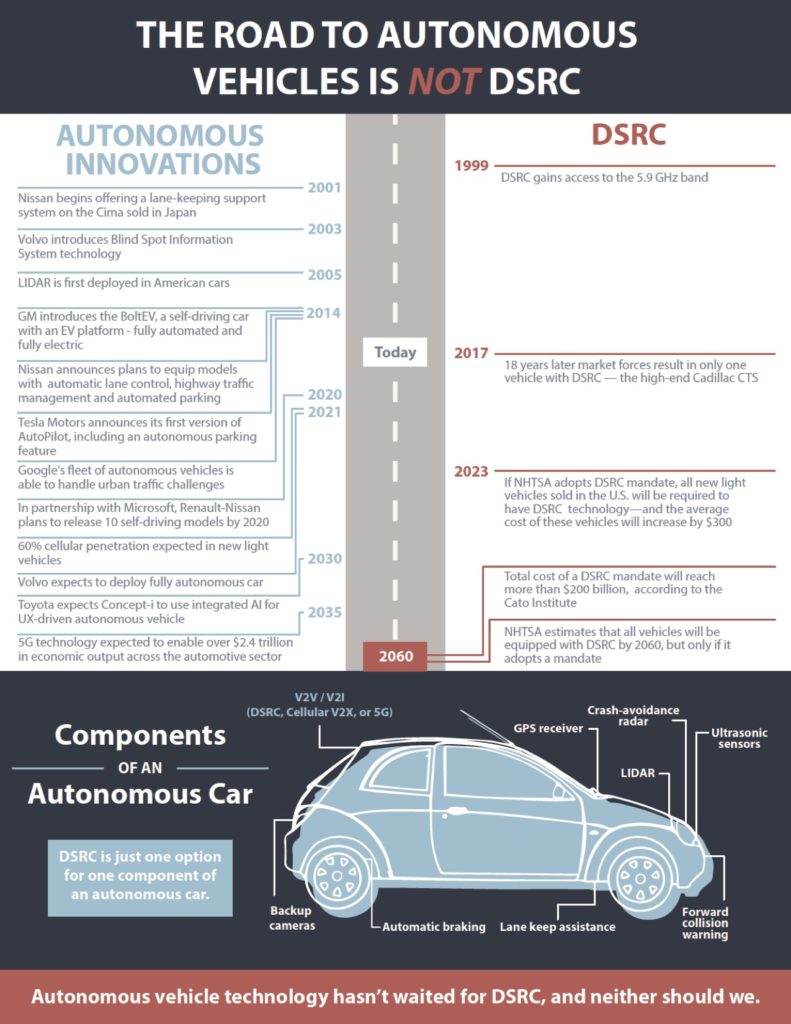Yesterday, the Niskanen Center filed a letter, infographic, and compendium of comments, articles, op-eds, and blog posts to the Federal Communications Commission (FCC) and the National Highway Traffic Safety Administration (NHTSA). The filing demonstrates the breadth of opposition from automakers, technology companies, public interest groups, and policy analysts to NHTSA’s Notice of Proposed Rulemaking on mandating Direct Short Range Communication (DSRC) service for vehicle-to-vehicle (V2V) communications.
In April, the Niskanen Center and other coalition partners sent a letter to Secretary of Transportation Elaine Chao asking her to temporarily suspend the Obama-era V2V rulemaking proceeding and allow more time for the current administration to examine this flawed proposal. The Niskanen Center also submitted comments in 2016 and in April of this year to the NHTSA docket. In those comments, we concluded:
Until such time as the Agency can assess how its proposed mandate comports to the demands of Executive Order 13771, no further action towards implementation should be taken. Additionally, the many concerns associated with privacy and cybersecurity, potential technological lock-in, and interoperability and other technical difficulties still need to be addressed. Rather than pursue this mandate, NHTSA should focus the bulk of its attention and resources on finalizing its policies on autonomous vehicles to expedite their safe and expeditious deployment, which will have a far greater benefit to public safety and health than the DSRC rules.
As noted in my recent op-ed in WIRED, autonomous vehicles are the next frontier of transportation. But, as depicted in the infographic below, DSRC is just one potential component of autonomous vehicle technology. Driverless cars need technology that accomplishes many things—sensing real world objects, sophisticated mapping of the environment, and making choices in real time about the data it processes. If DSRC gets deployed in all vehicles, it will only meet a fraction of those needs, and over a very long period of time. A partial timeline of autonomous vehicle and V2V developments, depicted in the accompanying infographic, shows how various technologies have outpaced DSRC.

Innovation from the private sector has been several steps ahead of DSRC from the start, and there is no reason to suspect that a DSRC mandate will actually increase public safety on American roads. Any benefits to consumer safety won’t emerge for many decades. By then, we’ll likely have technologies that make DSRC, already out of date by modern standards, look even more antiquated.